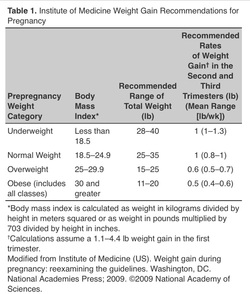How do we induce labor? Any means used to stimulate contractions that result in cervical dilation and ultimately delivery of a baby is considered an induction of labor. Other than “stripping” or “sweeping” membranes (a cervical exam separating the amniotic sac from the inner portion of the cervix to release prostaglandins), more definitive means of labor induction include synthetic prostaglandins (generally vaginal suppositories), amniotomy (breaking the bag of water), and Pitocin (synthetic oxytocin, the hormone released via breastfeeding and other sources of stimulation). These last 3 methods are done in the hospital, although stripping of membranes can be done in the office.
When and why do we induce labor? The answer to when largely depends on the reason for induction, so we can cover both the when and the why here. As a general rule, elective inductions (ie, I’m tired of being pregnant, get this thing out of me NOW!) occur at 39-40 weeks. Many insurance companies and Medicaid don’t pay for elective deliveries prior to 39 weeks, and with the lowest risk of injury/death to the baby between 39 weeks 0 days until 40 weeks 6 days, this generally makes sense. Elective deliveries prior to this time may also violate hospital policy, so even if your provider wanted to schedule you sooner, he/she probably wouldn’t be able to do so.
Of course, there are exceptions to the rule. Catastrophic findings may require immediate delivery regardless of gestational age, and certain medical conditions such as some twins, preeclampsia or high blood pressure due to pregnancy diabetes, and fetal growth troubles can also be an indication for delivering your baby sooner. Also, if your pregnancy nears the 41 week mark, we generally advise for labor induction due to the slight increase in stillbirth risk that begins at 41 weeks gestation and increases until time of delivery.
Bonus question: If I am being induced, does that mean I will have a cesarean delivery? The answer to that question is that it depends. Certainly, if the cervix is favorable (depends on dilation, position, thinning and softness of the cervix), particularly for someone who has had a previous successful vaginal delivery, then the chance would be very low. However, for a first time mother with an unfavorable cervix, then her chance of cesarean delivery is higher. The chance of primary cesarean delivery in Idaho is roughly 14%, and this may increase up to between 25-33% depending on the circumstances. For instance, even though the size of the baby is the same (either it will fit or it won’t), the cervical exam does change over time. These exam findings may be an indication of how well the cervix will respond to labor induction, which in turn is an indicator of the likelihood of successful induction as well as how long the process is likely to take. A mother with several previous deliveries may require only an amniotomy and her baby will follow in a few hours, but a first time mother may require a day or more of medical induction depending on her exam findings.
Rarely does the induction process cause significant enough stress to the baby that intervention is required, but even if contractions begin to come too frequently, there is often a medical treatment to reduce their frequency and decrease the stress on the baby. For instance, terbutaline can be administered in some cases, particularly with prostaglandin induction. With Pitocin, the half-life is only about 3-5 minutes, meaning that the effects of either too strong or too frequent contractions usually resolves within that time after stopping the medication.
In summary, labor induction is a complex decision. Even now, there is continuing research on this topic, and recommendations change frequently, but it remains a reasonable option in many pregnancies. There are many variables, but if you are interested in labor induction, be sure to discuss your specific medical history with your provider to see if “you are there yet!”
Nick

 RSS Feed
RSS Feed